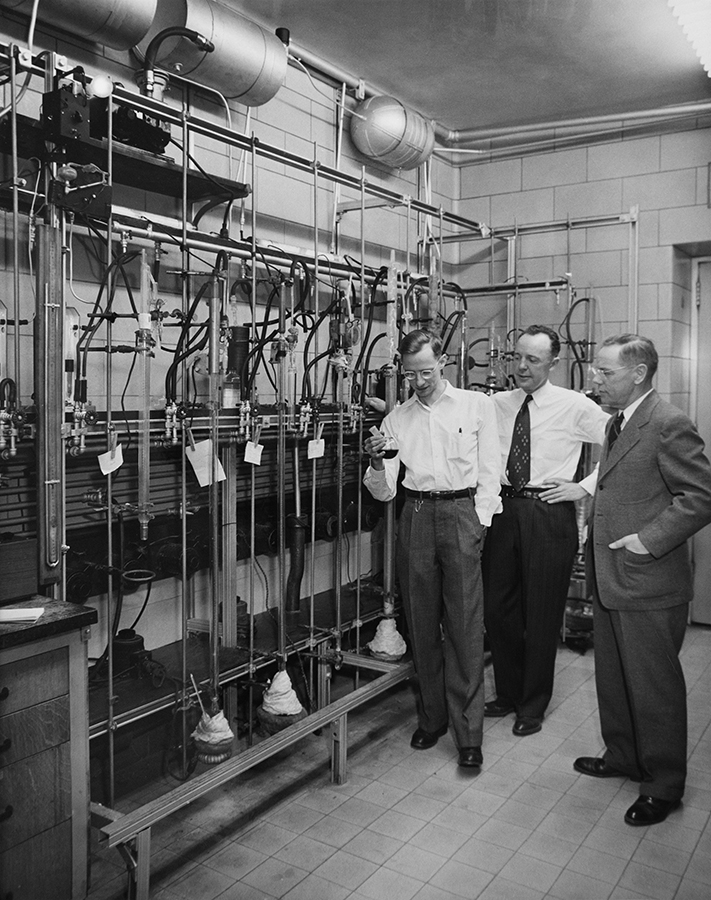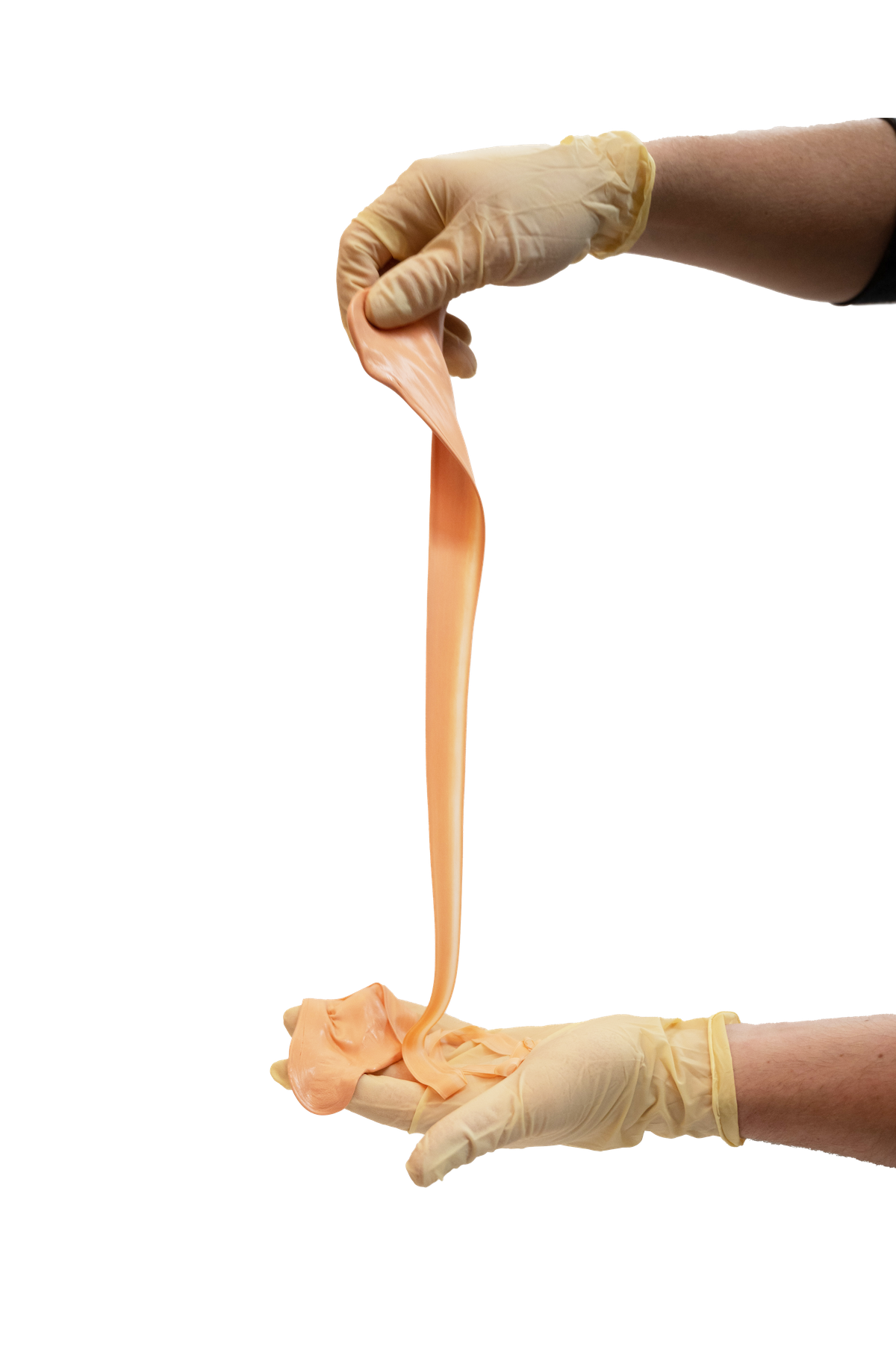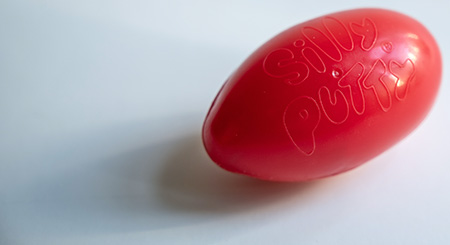Claim to Fame is Not a Stretch
80 years ago, Mellon Institute researchers filed a bouncing polymer patent prior to the inventor of Silly Putty
By Heidi Opdyke
Media Inquiries- Associate Dean for Marketing and Communication, MCS
- 412-268-9982
The history of Silly Putty is serious business. And while another scientist is often credited for the invention, Carnegie Mellon University alumnus Earl L. Warrick has a claim to its discovery.
Warrick spent significant time at the Carnegie Institute of Technology (now Carnegie Mellon University). He received his bachelor's and master's degrees in 1933 and 1934 in chemical engineering, respectively, as well as his doctorate in chemistry in 1943 from the school.
After earning his bachelor's and master's degrees and working in industry, he joined Dow Corning Chemical as one of its scientists based out of the Mellon Institute of Industrial Research.
In the early part of the 20th century, Kennedy Duncan, then a professor of industrial chemistry at the University of Kansas, made a case in his book "The Chemistry of Commerce," that the U.S. needed be more competitive in chemistry, said Guy Berry, a University Professor Emeritus of Carnegie Mellon and a former senior fellow at the Mellon Institute.
"The United States was falling way behind other countries," Berry said. "Andrew Mellon and his brother, Richard, bought into the idea that having collaborations between the industrial community and the University of Pittsburgh would be beneficial."
At the time few manufacturers operated research laboratories. Companies would pay for Mellon Institute fellows who would conduct research for them. While the Pitt partnership didn't quite take off, the Mellon Institute later moved to the corner of Fifth and Bellefield avenues in 1937 and started to have closer ties to Carnegie Tech through collaborations or discussions.
During the 1960s, Andrew Mellon's son, Paul, secretly proposed a merger between the two institutions. Administrators of both Carnegie Tech and the Mellon Institute realized that each had strengths that would increase if they merged, which occurred in 1967. The joint institution was renamed Carnegie Mellon University.
Today the building is home to CMU's Mellon College of Science Dean's Office, departments of Biological Sciences and Chemistry and numerous research laboratories.
Polymer Origins
In the 1940s, Warrick worked as a researcher for Dow Chemical in the Mellon Institute building, Berry said.
The Mellon Institute trained hundreds of scientists in industrial research and development, and they made many scientific breakthroughs. Research ranged from smog abatement for Pittsburgh to the first gas mask used in World War I. Some of the product discoveries that took place included "flakes coffee," a precursor to instant coffee and ethylene glycol, which is widely used in antifreeze.
Warrick's specialty was silicone polymers. While the United States used vast quantities of natural rubber in the early 1900s, Japan's invasion of Asia prior to World War II threatened to cut off supplies for the West. From 1939 to 1945, the U.S. Synthetic Rubber Program worked to produce material in large enough quantities to meet the wartime needs of the United States and its allies. Dow was part of the Rubber Program.
"They were making many kinds of materials, including polymers that had peculiar properties," Berry said. "If you made polymers containing silicone in the backbone, they were elastic but not quite ready to be used to fabricate a tube, for example. But as they studied how to combine natural and manmade materials, they were able to improve the proprieties until they could be used in commercial ways."
Through the program, Warrick and colleague Rob Roy McGregor invented the first commercially viable silicone rubber, which is now used in underwater masks, automotive tubing and more.

Mellon Institute fellows (from left) John Speier, Earl Warrick, and Rob McGregor discuss a new silicone product. Photo courtesy of the Carnegie Mellon University Archives.
"We didn't know what to do with it"
In his memoir, "Forty Years of Firsts: The Recollections of a Dow Corning Pioneer," Warrick wrote about how the two colleagues were experimenting with ways to make polydimethylsiloxane fluids more viscous. They added boric acid. While the acid did not create a silicon rubber, it did create a polymer that bounced, could be stretched farther than natural rubber and had a high melting temperature.
"We thought that since boric oxide is a good dehydrating agent it might pull water out. We put it in, and lo and behold, it went into the chain. It became Si-O-B-O-Si-," Warrick said in an interview in 1986 with the Beckman Center for the History of Chemistry. "It behaved like a rubber. It bounced and you could mold it like a putty. We didn't know what to do with it, really. We made a lot of it and just kept it on the shelf."
In his memoir, he added that they "would astound visitors by bouncing it off the ceilings and walls of our laboratories."
On March 30, 1943, Warrick and McGregor filed a patent for "Treating Dimethyl Silicone Polymer with Boric Oxide." They were awarded U.S. Patent Number 2,431,878 on Dec. 2, 1947. For Warrick's efforts on the patent, Dow paid him $1.
At the same time Warrick was working, James Wright, a chemist at General Electric, developed a similar stretchy synthetic polymer that bounced 25 percent higher than rubber. He applied for a patent in 1944.
Peter Hodgson, a toy marketer, bought the production rights to Wright's polymer from GE and sold it in plastic eggs prior to Easter and called it Silly Putty. By the mid-1950s, Silly Putty was an extremely popular toy and millions of eggs have been sold with the substance.
While the credit for Silly Putty has gone to Wright, Warrick, who had 44 patents to his name when he retired in 1976, claimed the credit for himself. And, in a 2002 obituary, Warrick's daughter Cathy said that he found the controversy for who was the true inventor amusing.
Warrick said in a 1986 interview that it was not uncommon for Dow Chemical and General Electric to be working on similar projects at the time and have overlapping patents.
"We did have a patent on it, but it's long since expired," he said.
The official credit for the goop is unlikely to transfer to Warrick, but it's still fun history to bounce around.

